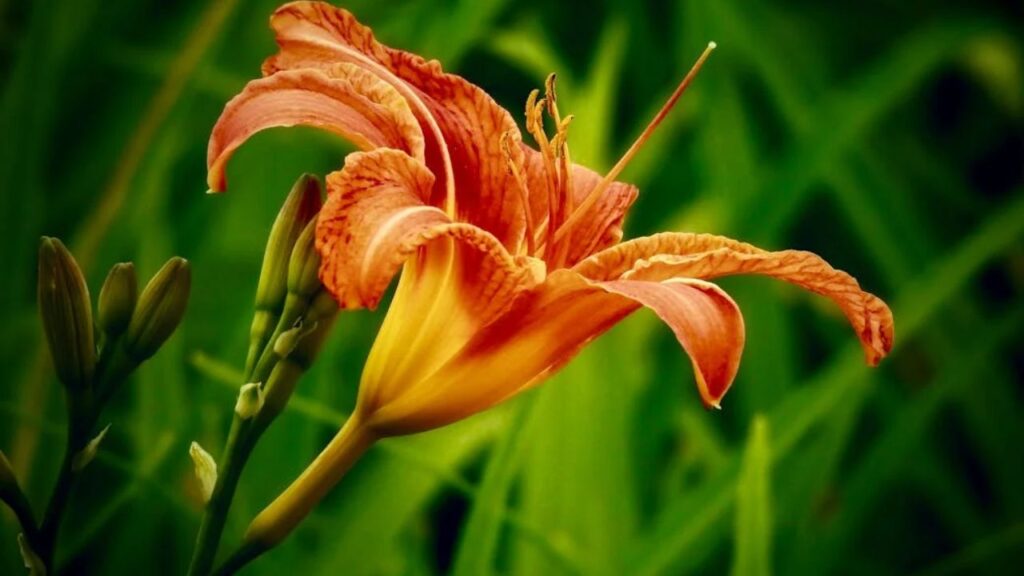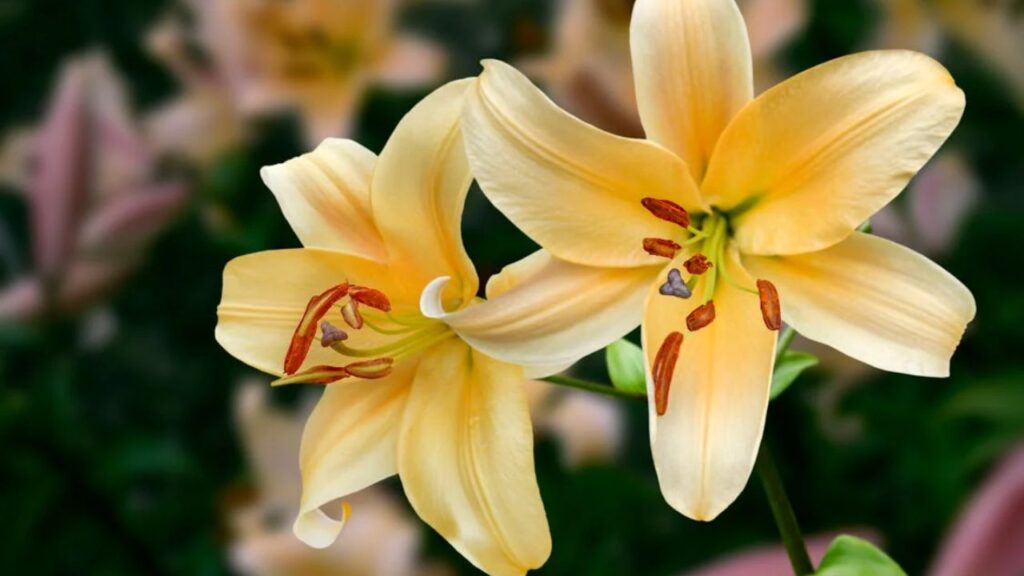The magnificent Coit Tower Daylily gives the famous San Francisco skyline a flash of color. Renowned for its vivid colors and fortitude, this bloom not only underscores the surroundings but also captures the essence of the city. We will explore in this post the importance of the Coit Tower Daylily, its development patterns, maintenance advice, and position in the nearby ecology. This bloom warrants attention no matter your level of gardening interest or just appreciation of the natural world.

The Significance of the Coit Tower Daylily
The Coit Towers Daylily represents the special fusion of urban life with the environment in San Francisco, not only a flower. Named for the well-known Coit Tower, which honors the city’s firemen, this bloom reflects the dynamic culture and past of the region. The brilliant petals of the daylily remind one of the beauty and resiliency of the city. Many residents treasure it, hence it is a popular feature in public gardens and local areas. Its presence improves not just the city’s appearance but also helps the people to feel connected. Apart from its local importance, the Coit Tower Daylily is becoming a preferred choice among visitors and photographers. Especially in the backdrop of the old tower and the expansive views of the Bay, its beautiful blossoms provide great picture chances. San Francisco honors its natural beauty as well as its rich past by presenting the daylilies. For both locals and guests, this appearance therefore becomes a pride symbol that promotes a closer respect of the surroundings.
Characteristics of the Coit Tower Daylily
The trumpet-shaped blossoms of this amazing flower, which range in hue from yellow to orange and red, define it. Renowned for its toughness, the Coit Tower Daylily thrives in a variety of soil kinds and circumstances. Although each bloom only lasts one day, the plant generates several blooms during the season to provide a constant show of color. The vivid blooms find a lovely setting from the rich, green foliage. Gardeners love the daylily because of its tenacity; it takes little care and still provides maximum visual impact. Usually flowering late spring to early summer, the blooms create an amazing show in gardens and parks. Their adaptability to many situations helps them to fit urban settings and makes them a perfect choice for city landscaping. Particularly helpful in a city like San Francisco, known for its microclimates, the strong character of the daylily allows it to resist swings in temperature and changing moisture levels.
Growing the Coit Tower Daylily
Maintaining the Coit Tower Even for new gardeners, daily life is a fulfilling experience. These plants like well-drained soil and might grow in full sunshine to mild shade. Planting calls provide enough distance to accommodate their natural development patterns. Frequent watering will help them grow especially in dry times. Using a balanced fertilizer once in the spring will help to encourage robust flowers and good development. Daylilies fit the varying temperature of San Francisco when they establish since they grow more drought-tolerant. Dividing daylilies every three to five years is one of the finest ways to raise them. Along with avoiding crowding, this encourages better development and more plentiful blossoms. Early spring or late summer division of the plants lets you reproduce fresh ones, thereby enabling you to grow your garden or share with friends and relatives. Furthermore, timing the planting is vital; autumn lets the roots set before the growth season starts.

Caring for Your Coit Tower Daylily
Take to the Coit Tower. Daylily guarantees longevity and health with only a few easy actions. Frequent deadheading—that is, removing wasted flowers—helps the plant to look neat and promotes more flowering. Mulching all around the base helps control weeds and hold moisture. Though daylilies are quite hardy, one also needs to keep an eye on pests. Reducing the leaves in the fall helps the plant get ready for winter and lets it show up more robust in April. Just a little care can let you enjoy these lovely blossoms for several seasons. Ensuring appropriate drainage is still another crucial component of treatment. If your garden has thick clay soil, think about changing it with organic matter or raised beds as daylilies cannot flourish under waterlogged conditions. The health and blossoming possibilities of the plant can be much enhanced by this change. Monitoring the general condition of the plants will also enable you to identify any problems early on, thereby enabling quick intervention and care.
The Coit Tower Daylily in the Ecosystem
Attracting many pollinators, including bees and butterflies, the Coit Tower Daylily is crucial in the local ecology. This engagement helps to create a better surroundings and fosters variety. Gardeners may assist to preserve these important species by planting daylilies, therefore encouraging ecological balance. Moreover, the daylily’s adaptability for urban environments makes it a great choice for city gardens as it offers food and shelter for animals. The need of maintaining green areas in metropolitan surroundings is shown by this harmonic interaction between plants and pollinators. Moreover, the presence of daylilies in city parks and gardens might assist fight urban heat islands by means of transpiration, therefore offering cooling effects. Their rich vegetation absorbs toxins and releases oxygen, therefore improving the air quality. This makes the Coit Tower Daylily a useful addition for the urban scene in addition to a lovely one. Including such strong plants into landscaping may be rather important in improving urban ecosystems as cities work for sustainability.
Decorating with the Coit Tower Daylily
Including the Coit Tower Daylily into your garden layout can produce an amazing visual effect. In borders, bulk plantings, or as focal pieces in mixed flower gardens, these blossoms look great. Their vivid hues may accentuate any scene and go quite nicely with other plants. Combining daylilies with other perennials and ornamental grasses will produce a striking and dynamic show all during the growing season. Furthermore famous among landscape designers is their adaptability, which lets one arrange creatively whether in formal gardens or a more laid-back environment. To have a year-round pallet of hues, think about grouping daylilies with other seasonal blossoms. For example, combining them with spring flowers like tulips or daffodils guarantees that your garden will always be vivid and provides a longer bloom season. By setting daylilies as a backdrop, you may also improve the visual depth of your garden and let shorter plants take the stage. This layering approach not only makes best use of space but also produces a more interesting visual experience.

The Cultural Impact of the Coit Tower Daylily
The Coit Towers Daylily has spun into San Francisco’s cultural fabric. Celebrating this bloom and stressing its beauty and importance, local celebrations and activities may feature Often holding seminars and educational activities focused on daylilies, garden clubs and community groups help to inspire a passion of gardening among their members. This flower not only improves the look of the city but also attracts people together, thereby generating chances for resident interaction and cooperation. The Coit Tower Daylily is a monument to environmental care and community pride. Painting and photography among other artistic mediums frequently display the daylily, highlighting its vivid hues against the backdrop of the city’s monuments. These creative depictions strengthen the cultural icon status of the bloom. Its beauty inspires local artists, and many community programs help daylilies to grow, therefore fostering a feeling of closeness and belonging among the people. This bloom reminds us of the value of green places in cities and its delight for local life.
Difference Table
| Daylily Name | Color | Price | Bloom Time | Special Features |
| Buttered Popcorn | Yellow | $19.99 | Mid-Summer | Fragrant blooms, compact growth |
| Lullaby Baby | Soft Pink | $29.99 | Early to Mid-Summer | Delicate appearance, good for borders |
| Mauna Loa | Orange | $14.99 | Mid to Late Summer | Large flowers, heat tolerant |
| Dublin Elaine | Peach | $14.99 | Early to Mid-Summer | Reblooms, attractive foliage |
| Stella De Oro | Gold | $7.99 | Early to Late Summer | Continuous blooms, drought-resistant |
| Happy Returns | Yellow | $9.99 | Early to Late Summer | Reblooming, fragrant |
| Indian Giver | Red | $39.99 | Mid-Summer | Unique color, tall stems |
| Red Volunteer | Bright Red | $14.99 | Mid-Summer | Eye-catching color, hardy |
| Chicago Apache | Red | $15.99 | Mid-Summer | Attracts pollinators, sturdy growth |
| Purple D’Oro | Purple/Yellow | $12.99 | Early to Mid-Summer | Versatile in sun/shade, long blooming period |
This table offers a short summary to enable you to evaluate the several daily variants according to their traits.
Conclusion
The Coit Tower’s Daylily has turned into the cloth of San Francisco. Celebrating this bloom and underlining its beauty and significance, neighborhood events and activities might include Many times, daylilies, garden clubs and community organizations hold seminars and educational events aimed at inspiring a passion for gardening among their members. This flower not only makes the city more beautiful but also draws people together, creating opportunities for resident cooperation and interaction. The Coit Tower Daylily honors communal pride and environmental stewardship. Among other artistic mediums, painting and photography especially show the daylily, stressing its vivid colors against the background of the city monuments. These artistic interpretations enhance the bloom’s cultural symbol value. Local artists are inspired by its beauty; numerous community projects assist daylilies in growing, therefore promoting a feeling of connection and acceptance among the people. This bloom reminds us of the delight for local life and the need for green areas in cities.
FAQ’s
1. What is the most sought after daylily?
- Buttered Popcorn Daylily – $19.99
- Lullaby Baby Daylily – $29.99
- Mauna Loa Daylily – $14.99
- Dublin Elaine Daylily – $14.99
- Stella De Oro Daylily – $7.99
- Happy Returns Daylily – $9.99
- Indian Giver Daylily – $39.99
- Red Volunteer Daylily – $14.99
- Chicago Apache Daylily – $15.99
- Purple D’Oro Daylily – $12.99
2. What zone is daylily Coit Tower in?
Hardy in USDA zones 3-9. Humidity: Moderately low Fertilizer: Monthly using a balanced fertilizer during the growth season. A magnificent and prolific blooming that accentuates any garden or landscape!
3. What is the longest blooming daylily?
Miss Amelia is This is your daylily if you want a profuse long-blooming flower. Every plant boasts lots of fragrant blossoms for over three months! ‘Miss Amelia’ also multiplies fast, so in no time you will have a lovely mass.
4. What is the life expectancy of daylily?
Blue is the sole color not relevant to Daylilies, which thrive in demanding environments like dry soil, short urban garden plots, and sloping lands. Although one single Daylily bloom lasts just a few days, the plant can survive up to three years.
5. Is there a daylily that blooms all summer?
Here is an everyday view of Stella D’Oro, always flowering. Starting in May, this perennial will exhibit golden, yellow flowers and keep right up until a severe cold.
